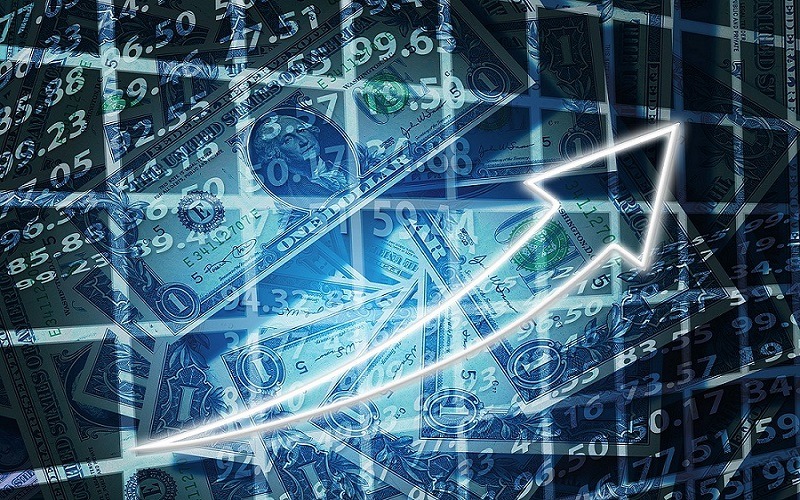NFTs And Web3: Understanding The Intersection Of Blockchain And Digital Art
Web3 is a decentralized web ecosystem built on blockchain technology, which is revolutionizing the way we interact and transact on the internet. One of the most interesting applications of Web3 is the use of Non-Fungible Tokens (NFTs) in the world of digital art. In this article, we will explore the intersection of NFTs and Web3 and the implications this has for the future of digital art.
NFTs are a type of cryptographic token that is unique and non-interchangeable, meaning that no two NFTs are the same. They are built on blockchain technology, which ensures that they cannot be duplicated or tampered with. NFTs can represent any digital asset, such as artwork, music, videos, or even virtual real estate. The ownership and authenticity of these assets are recorded on the blockchain, which makes them transparent and immutable.
NFTs and Digital Art:
NFTs have had a significant impact on the world of digital art. In the past, digital art was often considered to be a lesser form of art, as it was easily copied and distributed without any compensation to the artist. However, NFTs have changed this by allowing digital artists to sell their work as unique, one-of-a-kind assets that can be owned and traded, like physical art. This has created a new digital art market, attracting a lot of attention from collectors, investors, and art lovers alike.
The future of NFTs and their potential impact on the art world 🤠
1/ NFTs are quickly gaining popularity in the art world, and for good reason. They offer a new way for artists to monetize their work and provide collectors with a way to own a unique piece of digital art. pic.twitter.com/xgrKPxXQis
— NFT Digest 🤠 (@theNFTdigest) April 26, 2023
How do NFTs work with Digital Art?
NFTs work with digital art by providing a way for artists to prove ownership of their work and control its distribution. When an artist creates a digital artwork, they can create an NFT that represents that artwork on the blockchain. The NFT contains a unique identifier that is linked to the artwork, and records the ownership and provenance of the piece. The NFT can then be sold or traded like any other asset, with the ownership and transaction history recorded on the blockchain. This provides a way for artists to monetize their work, as they can sell their NFTs directly to collectors or through online marketplaces.
Benefits of NFTs in Digital Art:
There are several benefits of using NFTs in the world of digital art. First, NFTs provide a way for artists to prove ownership and authenticity of their work, which was previously difficult to do in the digital realm. This helps to prevent plagiarism and piracy, and ensures that artists are properly compensated for their work. Second, NFTs create a new market for digital art, which has attracted a lot of interest from collectors and investors. This has led to a surge in demand for digital art, which has benefited artists and collectors alike. Finally, NFTs provide a way for artists to retain control over their work, as they can set the terms and conditions of the sale and distribution of their NFTs.
Let’s explore the top 5 benefits of NFTs in Digital art
- Proof of Ownership: One of the most significant benefits of NFTs in digital art is the ability to prove ownership and authenticity of digital works of art. NFTs are unique digital assets that are registered on the blockchain, providing a secure and immutable record of ownership. This allows artists to prove that they are the original creators of a digital work of art and provides a way for collectors to verify the authenticity of the artwork they are purchasing.
- Monetization of Digital Art: NFTs provide a new way for artists to monetize their digital art. By selling NFTs, artists can receive a direct payment for their work, without having to go through intermediaries such as galleries or auction houses. This can provide a new source of income for artists, especially those who work primarily in digital media.
- Retaining Control Over Digital Art: NFTs allow artists to retain control over their digital art, even after it has been sold. With traditional art sales, once a work has been sold, the artist loses control over it. However, with NFTs, artists can set terms and conditions for the use and display of their work, which can provide greater protection and control over their creations.
- New Opportunities for Emerging Artists: NFTs have the potential to democratize the art world by providing new opportunities for emerging artists. With NFTs, artists do not need to have a traditional gallery or auction house representation to sell their work. This can provide greater exposure and opportunities for artists who may not have had access to the traditional art world.
- New Forms of Collaboration: NFTs can also provide new forms of collaboration between artists. With NFTs, artists can create digital collaborations, where each artist contributes a unique element to a digital artwork. This can create new opportunities for artists to collaborate and create unique works of art, which can increase their exposure and visibility in the art world.
NFTs in digital art provide significant benefits for artists and collectors alike. NFTs provide proof of ownership and authenticity, a new way to monetize digital art, greater control over digital creations, new opportunities for emerging artists, and new forms of collaboration. While there are still challenges that need to be addressed, it is clear that NFTs have the potential to revolutionize the way we think about digital art.
Challenges of NFTs in Digital Art:
Despite the benefits of NFTs in the world of digital art, there are also some challenges that need to be addressed. First, the market for NFTs is still relatively new and volatile, which makes it difficult to predict the long-term value of digital art. Second, there are concerns around the environmental impact of blockchain technology, as the mining of cryptocurrencies can be energy-intensive. Finally, there are issues around the accessibility and inclusivity of NFTs, as the high prices and technical requirements for purchasing and trading NFTs may exclude certain groups of artists and collectors.
Let’s explore the top 5 challenges of NFTs in digital art.
- Volatility of the NFT Market: One of the biggest challenges of NFTs in digital art is the volatility of the NFT market. The value of NFTs can fluctuate rapidly, which makes it difficult for artists and collectors to predict the long-term value of their NFTs. This can create uncertainty for artists who are relying on NFT sales for income, and for collectors who are investing in NFTs.
- Environmental Impact of Blockchain Technology: Another challenge of NFTs in digital art is the environmental impact of blockchain technology. The mining of cryptocurrencies, which is necessary for the creation and distribution of NFTs, can be energy-intensive and have a negative impact on the environment. This has led to concerns about the sustainability of the NFT market and the need for more eco-friendly solutions.
- Accessibility and Inclusivity of NFTs: While NFTs have the potential to democratize the art world by providing new opportunities for emerging artists, they can also be exclusive and inaccessible. The high prices and technical requirements for purchasing and trading NFTs may exclude certain groups of artists and collectors, which can perpetuate inequalities in the art world.
- Lack of Regulation: The NFT market is still largely unregulated, which can create risks for artists and collectors. There have been cases of fraud and theft in the NFT market, which can have serious consequences for those involved. As the NFT market continues to grow, there is a need for more regulation to protect the interests of artists and collectors.
- Copyright and Intellectual Property Issues: NFTs have raised new questions about copyright and intellectual property in the digital age. While NFTs provide a way for artists to prove ownership and authenticity of their work, they do not necessarily protect against copyright infringement. There is a need for clearer laws and regulations around the use of NFTs in digital art.
Also, read – The Impact Of Blockchain Technology In The Legal Industry, Including Smart Contracts And Digital Identities
Conclusion:
NFTs are a powerful tool for digital artists, as they provide a way to prove ownership, monetize their work, and retain control over their creations. The intersection of NFTs and Web3 has created a new market for digital art, which has attracted a lot of attention from collectors, investors, and art lovers alike. However, there are also challenges that need to be addressed, such as the volatility of the NFT market, the environmental impact of blockchain technology, and the accessibility and inclusivity of NFTs.
Despite these challenges, it is clear that NFTs have the potential to revolutionize the way we think about digital art. By creating a new market for digital art, NFTs provide a way for artists to monetize their work and gain recognition for their creations. This has the potential to democratize the art world and provide new opportunities for emerging artists.
As Web3 continues to evolve, we can expect to see even more innovative applications of NFTs in the world of digital art. For example, NFTs could be used to create new forms of collaboration between artists, or to create new ways of experiencing art in virtual and augmented reality. The possibilities are endless, and it is clear that NFTs will continue to play a significant role in the future of digital art.
In conclusion, the intersection of NFTs and Web3 has opened up a world of new possibilities for digital art. NFTs provide a way for artists to prove ownership, monetize their work, and retain control over their creations. While there are still challenges that need to be addressed, it is clear that NFTs have the potential to revolutionize the way we think about art, and create new opportunities for artists and collectors alike.
Stay informed with daily updates from Blockchain Magazine on Google News. Click here to follow us and mark as favorite: [Blockchain Magazine on Google News].
Get Blockchain Insights In Inbox
Stay ahead of the curve with expert analysis and market updates.
latest from tech
Disclaimer: Any post shared by a third-party agency are sponsored and Blockchain Magazine has no views on any such posts. The views and opinions expressed in this post are those of the clients and do not necessarily reflect the official policy or position of Blockchain Magazine. The information provided in this post is for informational purposes only and should not be considered as financial, investment, or professional advice. Blockchain Magazine does not endorse or promote any specific products, services, or companies mentioned in this posts. Readers are encouraged to conduct their own research and consult with a qualified professional before making any financial decisions. The featured image used is just a creative depiction of the title and it does not intend to hurt sentiments of any person or institution. If it hurts anyone sentiments, please do not hesitate to reach out to Blockchain Magazine.

 Bitcoin
Bitcoin  Ethereum
Ethereum  XRP
XRP  Tether
Tether  Solana
Solana  Dogecoin
Dogecoin  USDC
USDC  Cardano
Cardano  Lido Staked Ether
Lido Staked Ether  TRON
TRON  Chainlink
Chainlink  Avalanche
Avalanche  Wrapped stETH
Wrapped stETH  Sui
Sui  Wrapped Bitcoin
Wrapped Bitcoin  Toncoin
Toncoin  Stellar
Stellar  Hedera
Hedera  Shiba Inu
Shiba Inu  Polkadot
Polkadot  WETH
WETH  LEO Token
LEO Token  Litecoin
Litecoin  Bitcoin Cash
Bitcoin Cash  Bitget Token
Bitget Token  Hyperliquid
Hyperliquid  Uniswap
Uniswap  Official Trump
Official Trump  USDS
USDS  Wrapped eETH
Wrapped eETH  Pepe
Pepe  NEAR Protocol
NEAR Protocol  Ethena USDe
Ethena USDe  Aave
Aave  Aptos
Aptos  Internet Computer
Internet Computer  Monero
Monero  WhiteBIT Coin
WhiteBIT Coin  Ondo
Ondo  Ethereum Classic
Ethereum Classic  Cronos
Cronos  POL (ex-MATIC)
POL (ex-MATIC)  Mantle
Mantle  Render
Render  Dai
Dai  MANTRA
MANTRA  Algorand
Algorand 




